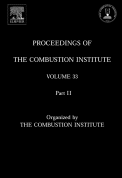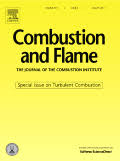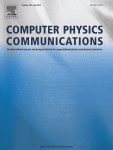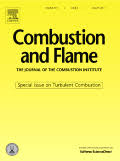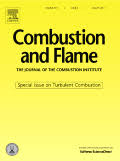
A detailed model of soot formation is proposed, which consists of a gas-phase kinetic model for the pyrolysis and oxidation of selected hydrocarbon fuels and a kinetic mechanism of soot nucleation and mass/size growth through coagulation and surface reactions. The gas-phase model (Ranzi et al., 2012) was expanded to include the chemistry of Polycyclic Aromatic Hydrocarbons (PAHs) up to four-to-five ring PAHs, with a modular and hierarchical approach. The discrete sectional method was employed to solve the size evolution of the particle size distribution function (PSDF). Analogy and similarity rules were employed to describe heterogeneous reaction kinetics of soot surface reactions. A variable collision efficiency was assumed for the coalescence of small soot particles. Larger particles were assumed to undergo aggregation. The predicted PSDFs are found to be in reasonably good agreement with the experimental data for nascent soot measured in an atmospheric-pressure premixed ethylene–oxygen–argon flame in the burner-stabilized stagnation flame configuration. Sensitivity analyses of the PSDF, number density, and volume fraction were carried out with respect to the rate parameters of addition reactions of acetylene, PAHs, resonantly stabilized radical reactions, and coalescence and aggregation. The results show that the reaction of PAHs and acetylene with soot surfaces and the kinetics of coalescence and aggregation exhibit dominant effects on the detailed and global soot properties for the flame studied, in agreement with conclusions of a large range of previous modeling studies.
Keywords
Soot; Kinetics; Burner-stabilized stagnation flame; Particle size distribution
How to cite
Saggese, C., Ferrario, S., Camacho, J., Cuoci, A., Frassoldati, A., Ranzi, E., Wang, H., Faravelli, T.
Kinetic modeling of particle size distribution of soot in a premixed burner-stabilized stagnation ethylene flame
Combustion and Flame, 162(9), pp. 3356–3369 (2015)



